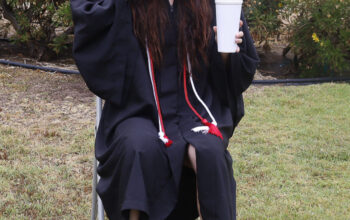Swerving around sporadic streams of pedestrians, and zigzagging through heavily populated paths on campus is the norm for many cyclists and skateboarders.
The flow of traffic on the mall can be hectic, and nonmotorized recreational transportation presents a potential danger to students. It’s not only a safety concern for pedestrians and riders, but also a hazard in parking lots and for vehicles that travel across campus, such as sheriff vehicles and electric carts.
Details regarding the “Bicycle Safety Rules” on campus can be found in the Pierce College 2017-2018 Catalog.
The rules indicate that “no bicycle riding is permitted on pedestrian sidewalks and mall walkways. Riding on sidewalks adjacent to classrooms, library, gyms, gardens, grass areas, or in any other college facilities is also not permitted. Walk your bike within these areas at all times.”
Additionally, students must lock their bicycles to bike racks, while “roller-skates, in-line skates and skateboards are not permitted at any time on the campus.”
These rules serve a purpose, and implementing these policies ensure safe walkways, sidewalks and pathways.
Whether you’re rushing to class or strolling down the mall, making your rounds on campus should not involve dodging bicyclists or fearfully looking over your shoulder when you hear the skidding wheels of a skateboard closing in behind you.
Bicyclists and skateboarders often travel at high speeds, zipping across campus in a reckless manner. Human error is a factor that often creates concern, and pedestrians are most vulnerable and sometimes unsuspecting of high speed boards and bikes.
People get distracted. They text as they walk and are occasionally careless or oblivious to their surroundings, and adding nonmotorized recreational transportation to campus walkways with crowds of students heightens the risk of potential collisions.
Pedestrians, skaters and cyclists alike share one commonality, both are extremely unpredictable.
Pedestrians often walk in clusters, but also tend to stop, change their rate of speed, shift directions, turn and make timely and last minute decisions as they navigate through campus.
On the other hand, skaters and cyclists tend to ride fast, but often have limited space to make last minute decisions, which if not made timely and accurately can find themselves knocking into people or falling down.
It’s not uncommon to see skateboarders weaving in between students at a pace that is unsettlingly fast, or a bicyclists turning a corner and nearly falling off to avoid hurting someone else. It’s not a pretty sight, but these incidents are completely avoidable by following the rules.
Another concern is potential collisions with vehicles.
The National Highway Traffic Safety Administration (NHTSA) suggests that bicyclists make themselves visible to stay safe while commuting.
“Drive where you are expected to be seen, travel in the same direction as traffic and signal and look over your shoulder before changing lane position or turning.”
Also, the NHTSA warns that drivers aren’t trained to spot bicycles as they drive, so cyclists should be alert and diligent when riding within a parking lot or near streets.
“Cars don’t expect to see moving traffic on a sidewalk and don’t look for you when backing out of a driveway or turning. Sidewalks sometimes end unexpectedly, forcing the bicyclist into a road when a car isn’t expecting to look for a bicyclist.”
Campus life should be safe for everyone, regardless of your prefered mode of transportation. People who enter campus with a bicycle, scooter or skateboard should be considerate to pedestrians by choosing to walking it out.


